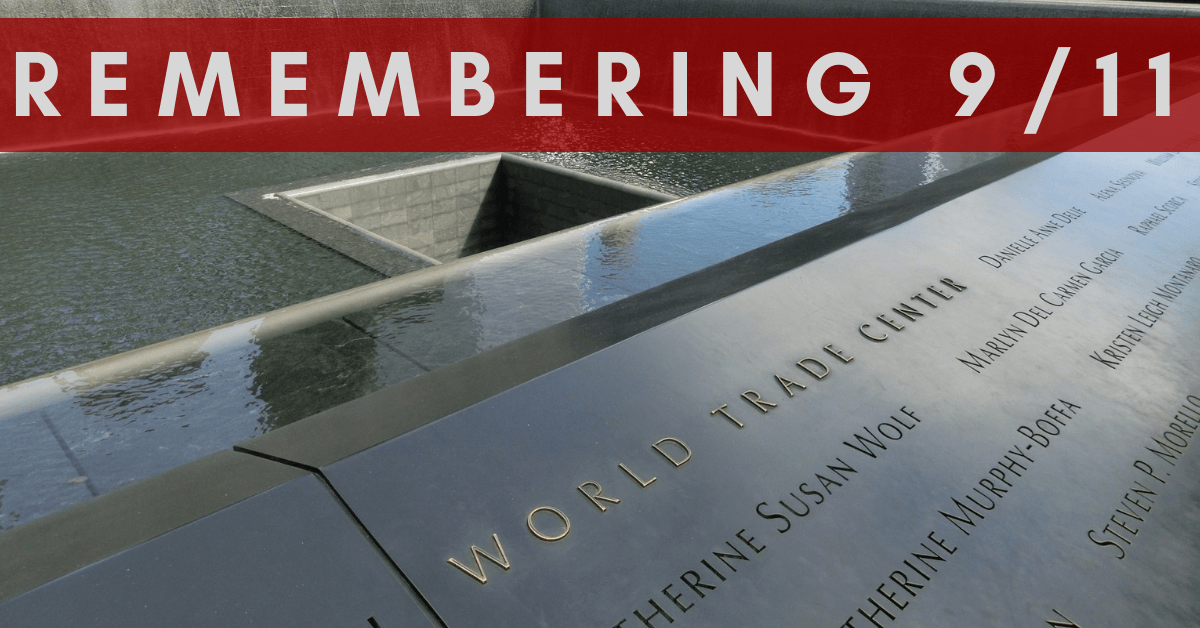
Many O’Neill students don’t remember when the twin towers fell. They don’t recall the brave passengers who took control of an airplane before it crashed it into a Pennsylvania field. Nor do they remember seeing the hole left in the Pentagon. After all, most of them were very young on September 11, 2001.
But O’Neill faculty do remember. They remember the attacks and the fallout. Their first-hand experiences allow them to serve as a bridge to the past for tomorrow’s public safety professionals.
O’Neill senior lecturer Bill Foley and retired clinical lecturer Jim White were both directly impacted by the events of 9/11. White was the deputy director of the Indiana Law Enforcement Academy at the time, as well as serving in the Indiana National Guard. Foley was a lieutenant colonel in the U.S. Army, supervising a training support brigade at Fort Harrison.

Foley’s team had been training and preparing Army National Guard and Reserve forces from three states to head to Bosnia and Kosovo. That changed on 9/11.
“When it became apparent we were under attack, our commander raised the terror threat level and we established an emergency operations center,” he recalls.
They shifted gears, and began training other support brigades who were managing recovery operations at the twin towers from Pier 6 in New York Harbor. But Foley’s primary focus in the immediate aftermath of 9/11 was mobilizing reserve forces for Operation Enduring Freedom, targeting Al Qaeda and the Taliban in Afghanistan, and Operation Noble Eagle, providing immediate protection for the United States.
Seven hundred miles away, White recalls the effect of one of those steps: grounding all air traffic.

“The thing I remember from 9/11 was how eerily quiet it was after the attacks,” he says. “The Academy was right in the flight path to Indianapolis International Airport and, suddenly, there was nothing flying over us.”
White was also in the Indiana National Guard. He was called in to discuss what had happened and was told there were orders to shoot down anything in the sky.
“That was pretty shocking,” he admits.
In the years to follow, both men’s careers would shift to the Middle East. Foley co-authored reports on weapons of mass destruction and homeland security, while working on plans to modernize the U.S. Army. He also worked diligently to ensure troops were prepared for what was coming next.
“When Operation Iraqi Freedom began on March 19, 2003, I worked 56 hours straight,” he says. “We had been training to make sure the troops were properly prepared and equipped for the geography and combat conditions they would face in Iraq.”
That operation changed also the course of White’s military career. In 2004, he was rerouted from Bosnia to Baghdad. He shakes his head as he thinks back to that time.
“I remember standing at the site of Babylon at the Ishtar gate and thinking, this used to be the most advanced civilization in the world—and now here we are,” he says.
He served seven months in Iraq, commanding troops, investigating prisoner abuse at Abu Ghraib, and witnessing chemical warfare first-hand.
“I’m no hero,” he says. “I did exactly what many others did. I served.”
That service eventually led him back to Indiana, where he became the director of Marion County Emergency Management. He eventually joined O’Neill, bringing a lifetime of military, law enforcement, and public safety experience with him.
With decades of service under their belts, both men provide unique insight to help students better understand both the history and the future of their potential careers.
“When you start talking about 9/11, it’s usually just another event to many students,” White says. “They were so young they don’t remember when it happened. But it makes them care about it a lot more when they hear your stories about how it impacted you, your family, your career, what you saw when you were there, and the changes you personally experienced afterwards.”
White and Foley’s personal lives were also impacted. They both knew victims of that day.
“The attack on the World Trade Center was painful,” Foley recalls. “I lost a dear friend with whom I had gone through military school, Col. (Ret.) Rick Rescorla. He was the vice president of Morgan Stanley Dean Witter in the South Tower. At the Pentagon, we lost Lt. Gen. Tim Maude, an Indianapolis native and member of my church. We also lost Col. Dennis Johnson and Col. Bud Boone. All three received a posthumous Purple Hearts, presented to their families.”
White says he used 9/11 as a way to bring the events of 17 years ago into the present-day for his students. He discussed the military response to the attacks and the changes our nation has seen, including the creation of the U.S. Department of Homeland Security.
“The benefit for O’Neill students is that they have faculty members who were there, who were directly connected to and impacted by 9/11 and its fallout,” he says. “We didn’t just read about it or watch coverage of it. We were a part of the response and can bring the lessons we learned back to students to prepare them for their own careers.”
“We talk to students about how to gain an improved sense of situational awareness, better intelligence sharing and communication so this kind of event does not reoccur on their watch,” Foley adds. “We remind them that there is an obligation to those nearly 3,000 who died that day that we as a nation can do better than this in getting it right and to diligently ensure it never happens again.”
